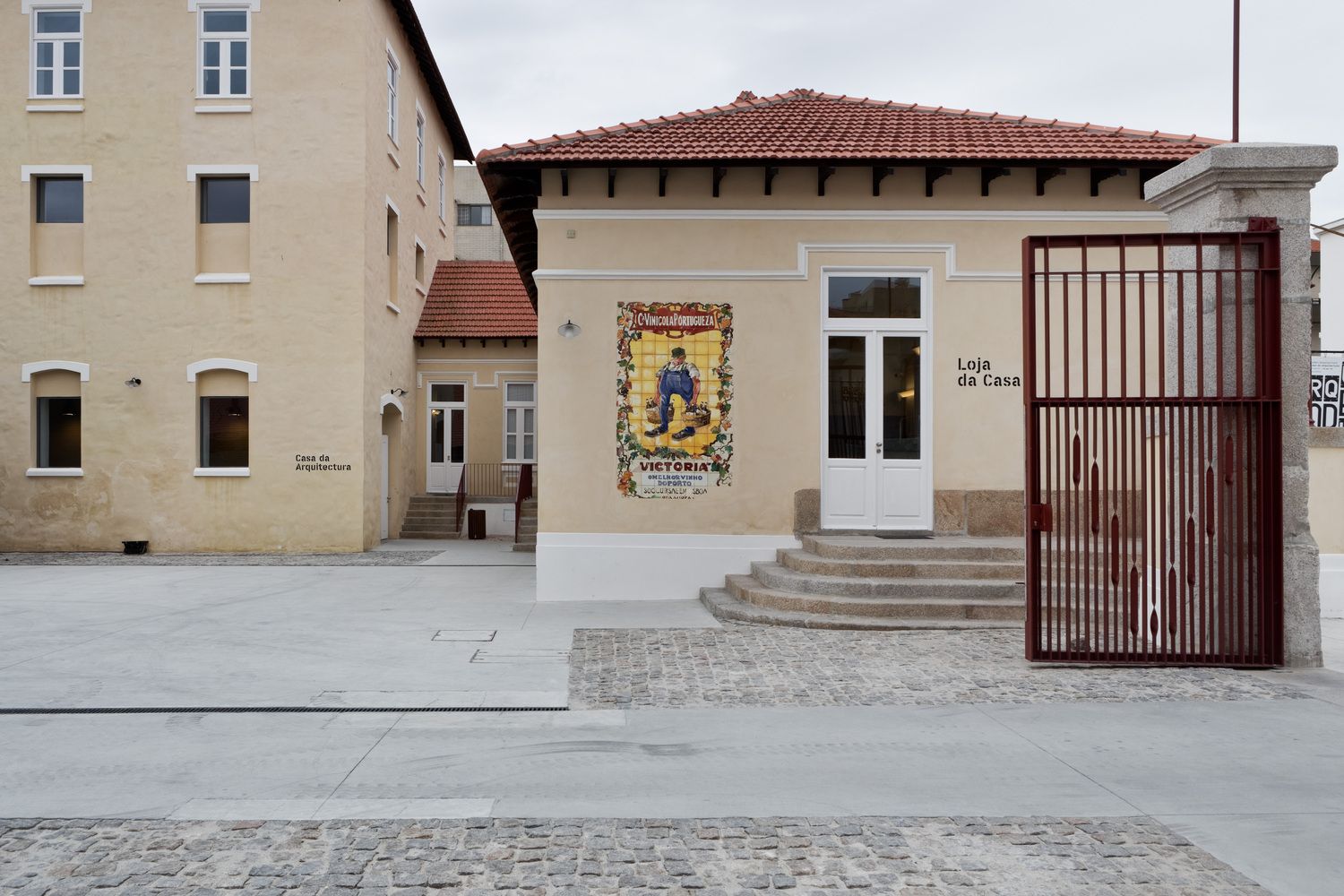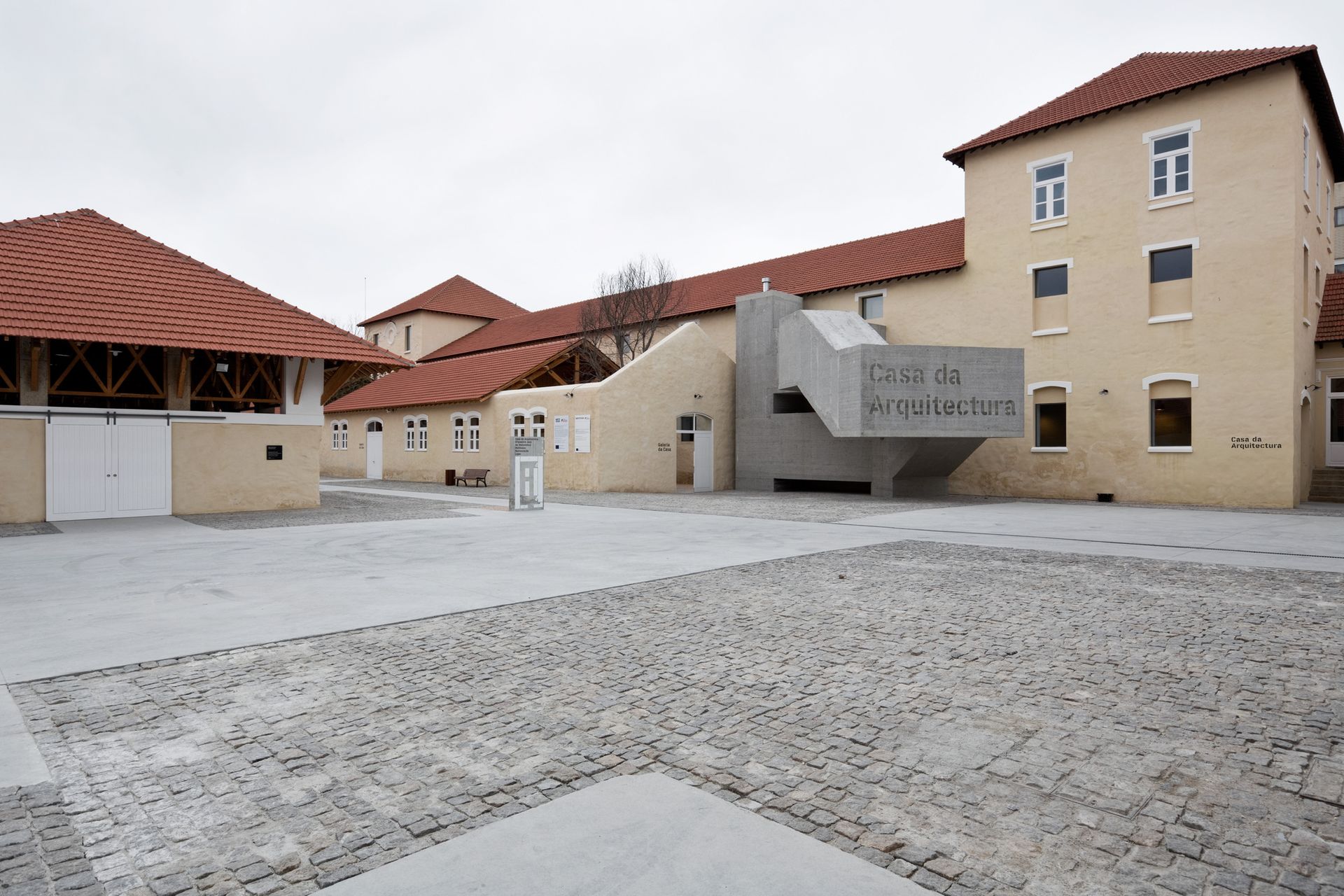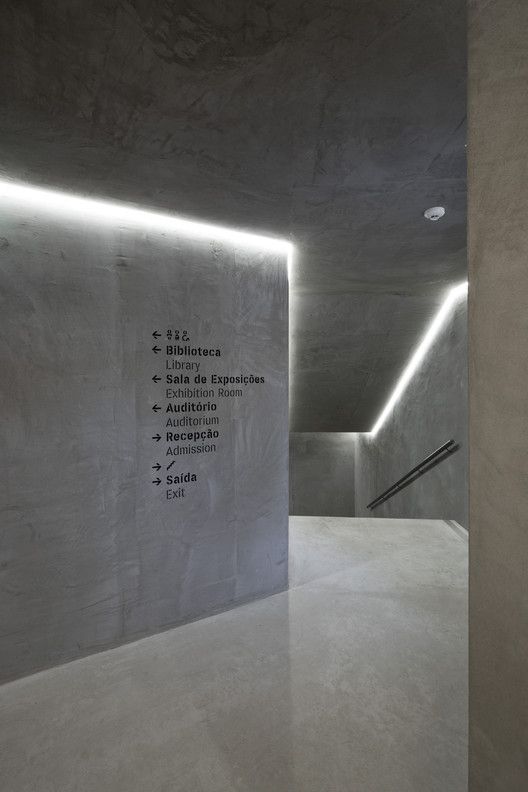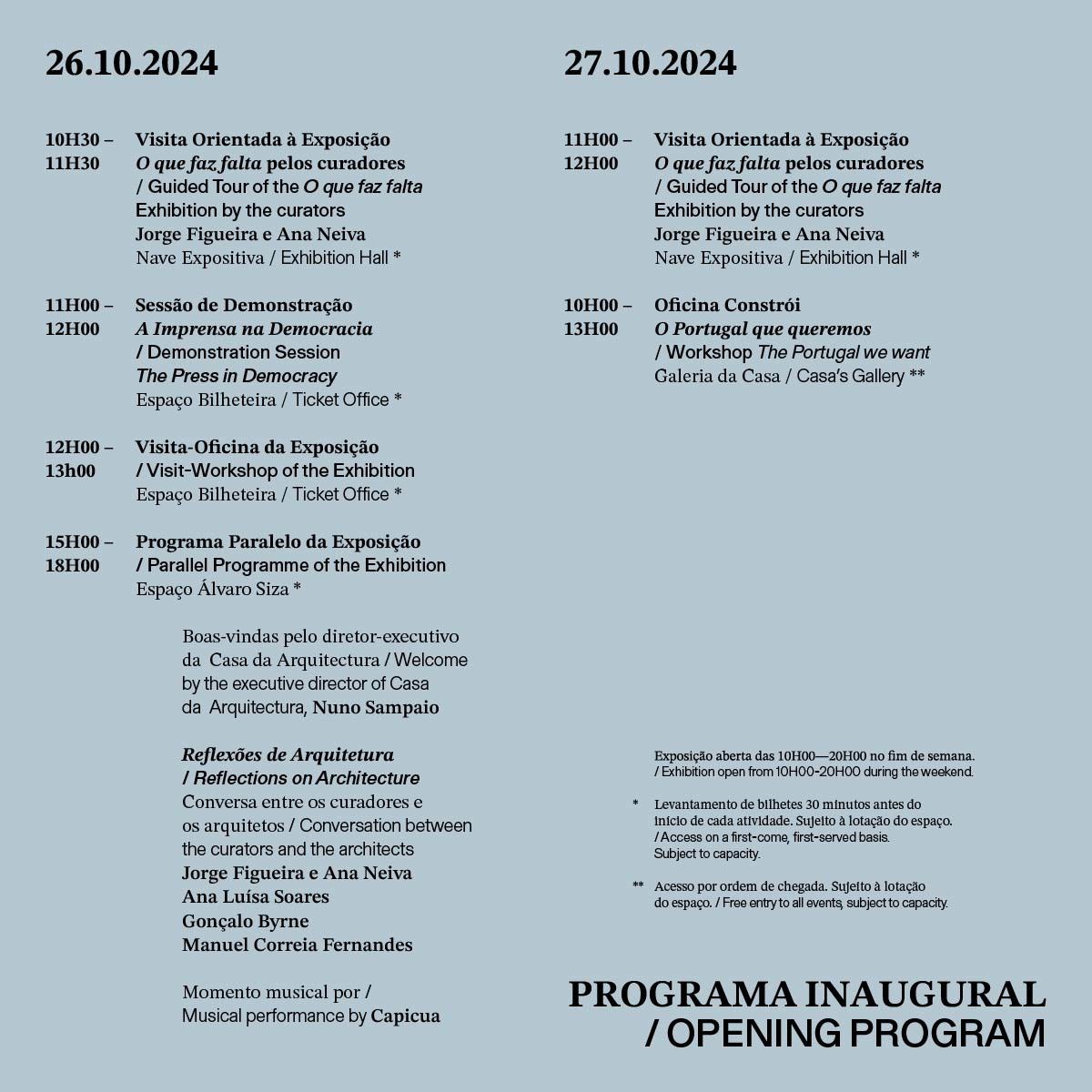This weekend, the Casa da Arquitectura invites visitors to reflect on the last 50 years of Portuguese architecture with the exhibition “O Que Faz Falta: 50 Years of Portuguese Architecture in Democracy”. The exhibition opens on October 26, 2024, and is significant in remembering the April 1974 Revolution. Curated by architects Jorge Figueira and Ana Neiva, the exhibition offers a broad perspective on the architectural developments that defined the democratic period, while also paying homage to José Afonso’s 1974 revolutionary song, “O Que Faz Falta.”


© Luís Ferreira Alves
The curators aim to show how architecture has reflected and driven Portugal’s changing democratic landscape over the past 50 years. The exhibition shows how architecture has helped to shape public spaces, promote civic identity, and respond to Portugal’s diverse geographies. The selected projects show how architects from different generations and backgrounds have contributed to the country’s rich cultural diversity.
The exhibition is based on the “50 Years of Contemporary Portuguese Architecture” collection, created by Casa da Arquitectura to document Portugal’s architectural production during the democratic era. Curators Carlos Machado e Moura, Graça Correia, João Belo Rodeia, Jorge Figueira, Paula Melâneo, and Ricardo Carvalho have all contributed to the creation of this archive, which aims to support ongoing research into the evolution of architecture in the country. This exhibition is the first of many thematic interpretations that will emerge from the collection.
The exhibition is 700 square meters and is divided into five chronological parts. Each part represents a key period of architectural and social change.
1. Revolution (1974–1983)
This section covers the revolutionary years and the decade that followed. It highlights the emergence of new public initiatives and the establishment of fundamental rights in the aftermath of the revolution.
2. Europe (1984–1993)
This module examines how European funds transformed Portugal’s infrastructure and how Portuguese architecture gained international recognition after joining the European Community in 1986.
3. Fin-de-Siècle (1994–2003)
This period reflects the balance between looking back at the 20th century and looking forward to the future, drawing parallels with the cultural and architectural reflections of the turn of the 19th century in France.
4. Troika (2004–2013)
This module examines how architecture has responded to austerity measures and the rapid growth of the tourism sector against the backdrop of Portugal’s financial crisis and struggles with European identity.
5. Wi-Fi (2014–2023)
The final section addresses contemporary challenges such as technological advances, digitalization, cultural conflicts, and the urgent climate agenda impacting today’s architectural conversation.

© Casa da Arquitectura
Beyond architectural models, original drawings, and photographs, “O Que Faz Falta” engages in a broader cultural dialogue, including literature, film, and documentary references. This approach shows how architecture is connected to other parts of Portuguese society and honors important people who have influenced the country’s culture.
Opening at the Casa da Arquitectura on October 26, 2024, this exhibition will accompany a series of events curated by architects Nuno Sampaio and Jorge Figueira. The role of architecture in democracy will be discussed at these events until the exhibition closes on September 7, 2025. With the high patronage of the President of the Republic and support from the Ministry of Culture, “O Que Faz Falta” is part of the official program for the 50th-anniversary celebrations of the April 25 Revolution. With the support of the President of the Republic and the Ministry of Culture, “O Que Faz Falta” is part of the official program for the 50th anniversary of the April 25 Revolution.
As Casa da Arquitectura welcomes visitors to its retrospective, it reminds us that architecture is important in shaping a democratic society and of José Afonso’s call for social action, which is still relevant today.

© Casa da Arquitectura
This exhibition thoughtfully explores how architecture continues to influence and be influenced by the socio-political landscape. For architects, designers, and cultural enthusiasts alike, “O Que Faz Falta” offers crucial insights into how the built environment embodies the values of a democratic society and inspires new visions for the future.
